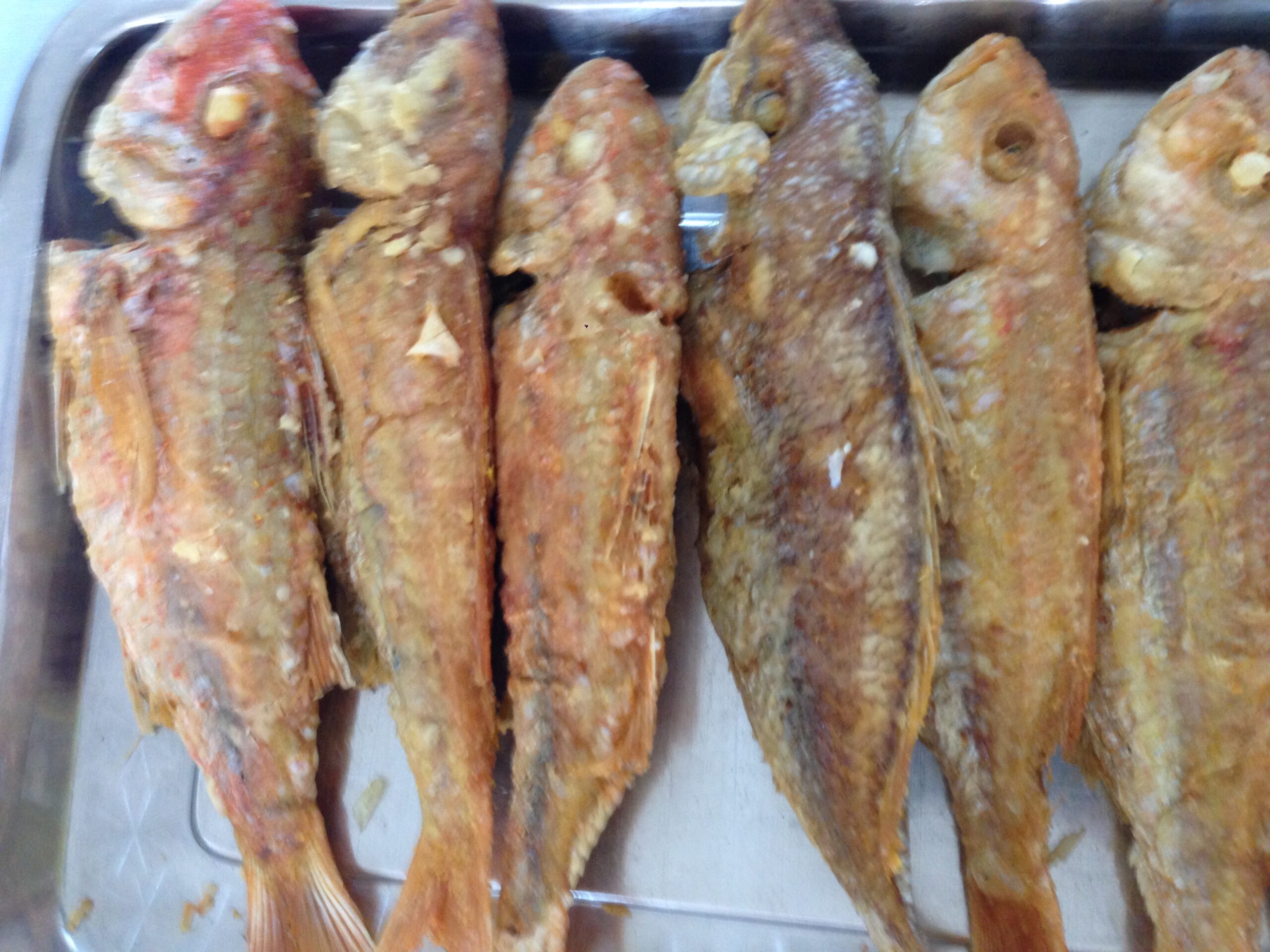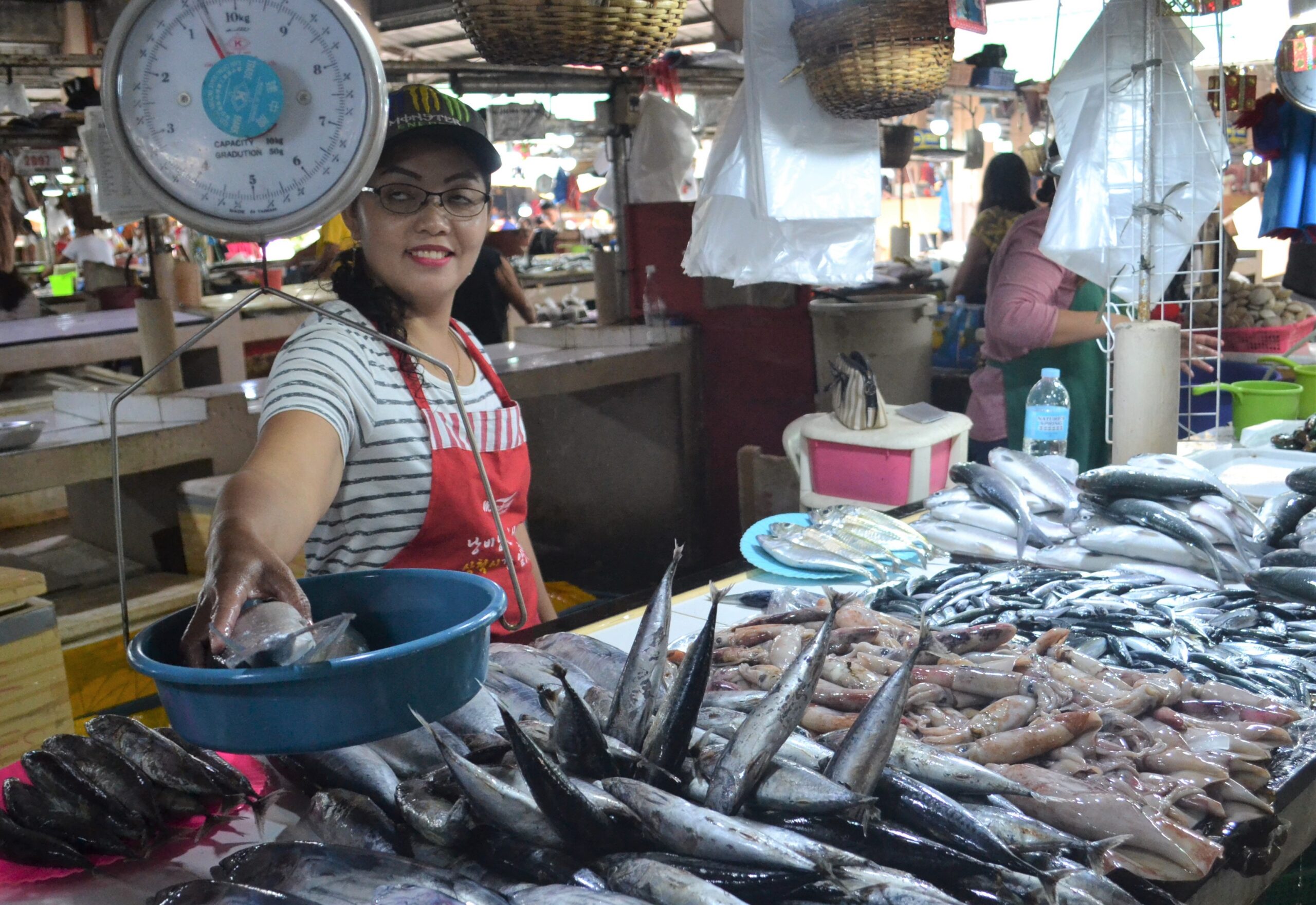Text and Photos by Henrylito D. Tacio
Aren’t you wondering why fish prices these days are quite high?
This is due to the “enforcement of the three-month ban on fishing at the Davao Gulf,” according to a news report which was published in Edge Davao last June 14. The source of the information was the Bureau of Fisheries and Aquatic Resources (BFAR).
Raul Millana, BFAR Davao regional director, said in an interview with Davao City Disaster Radio (DCDR 87.5) that the fishing in the open seas of Davao Gulf started last June 1 and will end on August 31.
Because of this fishing ban, the price of fish being sold in the market are most likely to increase.
The prohibition of fishing in Davao Gulf started nine years ago. The implementation “must be enforced to allow pelagic fish to reproduce since the period from June 1 to August 31 has been established as their spawning season,” explained Millana.
Most fish reproduce by spawning. “The process of spawning typically involves females releasing ova (unfertilized eggs) into the water, often in large quantities, while males simultaneously or sequentially release spermatozoa (milt) to fertilize the eggs,” Wikipedia states.
Actually, there are two main reproduction methods in fish. The first method is by laying eggs, and the second by live-bearing (meaning, producing their young alive).
In the first method, according to Wikipedia, the female fish lays eggs either on the sea floor or on the leaves of an aquatic plant. A male fish fertilizes the eggs, and both then work together to protect the eggs/babies from danger until they can defend themselves.
In the second method, the male fish uses its anal fin to transmit sperm into the female fish and fertilize the fish eggs. Later, the female gives live birth to her fry.
Davao Gulf, which spans more than ten coastal municipalities from Malita in Davao Occidental in the south to Boston town on the eastern coast of the region, occupies about 308,000 hectares.


In 2014, the Department of Agriculture (DA) and Department of Interior and Local Government (DILG) issued joint Administrative Circular No. 2, which established a three-month closed fishing season in the Davao Gulf.
The reason for the ban was to “conserve marine resources, to secure the spawning period of pelagic fishes in the gulf and continuously implement measures to address illegal, unreported and unregulated (IUU) fishing.”
Studies have shown that “IUU fishing accounts for about 68.5 billion pesos of fish taken from Philippine waters annually, and unsustainable trade and consumption only makes the problem worse by encouraging overfishing and bad fishing practices.”
In the Davao Gulf, the most abundant fish family, according to studies, was the Carangidae (jacks, pompanos, mackerels, runners, and scads) with 32%, followed by Scombridae (mackerel, tuna, and bonito) with 20%, and Clupidae (herrings, shads, sardines, hilsa and menhadens) with 10%.
Data from the agriculture department said the fisheries sector contributes about 18% to the gross domestic product in agriculture.
The problem of fish shortage is not confined in the Davao Gulf but in other parts of the country. “The current condition of fisheries in the Philippines and worldwide is bleak,” stated oneocean.org. “Overfishing, illegal fishing and habitat destruction combined with increased demand for fish and population growth continue to drive fisheries production into a deeper abyss.
“Seemingly impossible just 20 years ago, protein deficiency among fishing communities is now increasing at an alarming rate,” oneocean.org added.
Fishing has been an important source of livelihood for Filipinos, fish being the second staple food – next to rice. “About 62 per cent of the population lives in the coastal zone,” says World Bank’s Philippine Environment Monitor.
On average, every Filipino consumes about 98.6 grams of fish and fish products each day. The fishing industry provides employment to about one million Filipinos, according to the Philippine Statistics Authority (PSA).
“Our problem is population,” observed a noted newspaper columnist. “We are having more children faster than we can grow the food to feed them.”
A former government official seemed to agree. “Demand for food is growing fast not because our incomes are growing but because our population is growing at an alarming rate,” he said, adding that about two million mouths are being added to be fed every year.
Fishery experts claim that all fishing activities depend on a fragile resource base which, if mismanaged and overexploited, can easily collapse.
“Coral reefs, seagrass beds and mangroves are among the world’s most important and most endangered ecosystems,” says Dr. Miguel D. Fortes, a marine scientist, and the first Filipino to receive the prestigious International Biwako Prize for Ecology. “They are also the major life-support and protective ecosystems of the coastal zone.”
Aside from the destruction of coastal ecosystems, another factor that contributes to the depletion of fishery resources in the country is the siltation and sedimentation of the water ecosystem due to deforestation, mining, and other human activities.
“Besides bringing in poisonous and toxic substances into the water, silts and sediments lead to shallowing of the riverbeds killing phytoplanktons and other aquatic organisms, which are responsible for photosynthetic activities,” the PSA said.

